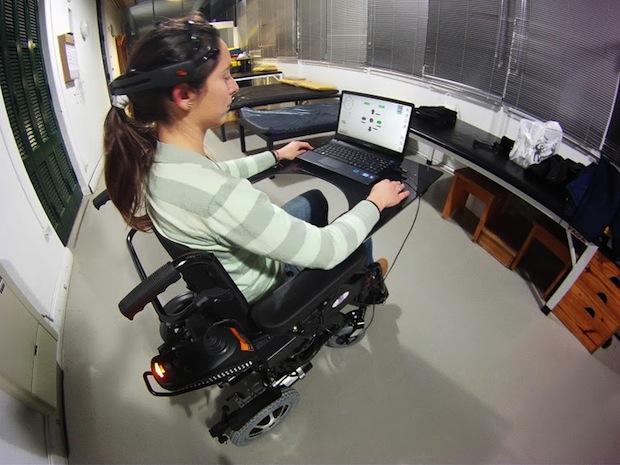A thought-controlled wheelchair for quadriplegics


BUENOS AIRES -- The woman in the wheelchair raises an eyebrow and her electric wheelchair turns left. She verbally tells it to go forward and it does so. Then she silently thinks 'stop.'
And it comes to a halt.
What makes this possible is an innovative combination of off-the-shelf technology created by Interactive Dynamics, a startup based in Argentina’s second city of Rosario. By using software to tie together a $300 neural headset with a $1,700 electric wheelchair, Interactive Dynamics founders Pablo Medina, Gastón Pereyra Puyó and Juan Pablo Manson have made it possible for people with neurological damage to control their own movements -- up to a point -- for a reasonable sum.
The creation of an innovative device like this in the mid-sized Argentine city of Rosario shows how the democratization of technology plays into Argentina's strengths and allows less rich countries to become international players in invention. Because of its regular economic and political busts, Argentina's well-educated population has learned to improvise with what is at hand -- a mentality known as atalo con alambre, or "tie it with wire."
But a lack of funds to buy expensive cutting-edge technology has often limited what they can create with that impressive improvisational skill. Now that top technology is widely available at accessible prices -- the Emotiv EPOC neuroheadset, used in this wheelchair, goes for $299 -- entrepreneurs in less developed countries like Argentina can compete on an almost equal footing.
As we noted when we profiled Interactive Interactive Dynamics last year, the three old friends and tech industry co-workers founded the firm in 2011 to exploit recent developments in Natural User Interface (NUI) -- that is, in ways of controlling computers that don’t involve a mouse or joystick. At the time, they were "telepathically" controlling a tiny toy robot via a Brain-Computer Interface (or BCI) headset that employed electrodes to measure the brain's electrical activity. They trained the BCI software to recognize the patterns of brain activity that came about when the user consciously formed simple thoughts like 'go' and 'stop,' and then had the robot take those actions.
At the time, Manson told us that they were working on an unspecified product for people with neurological damage.
"What we had done was a proof of concept. We did it to show that someday we could do what we’ve done today with a chair," Manson, 37, says today.
To make the thought-controlled chair possible, Interactive Dynamics partnered with the Fundación Rosarina de Neuro-Rehabilitación (the Neuro-Rehabilitation Foundation of Rosario) -- "An associate who knew how to work with patients and real problems," Manson says -- and after a year of working together they unveiled the vehicle in late July.
The company and the foundation worked with ten local patients in Rosario. They first trained the patients to use a combination of thoughts, words, and facial tics to control video game-style software. Once the patients had mastered the games, they were transferred to the electric chairs. They each received 15 one-hour training sessions.
"The patients got excited very quickly," Manson says. "It’s a strange experience for someone who can’t move his hand."
The wheelchair, an Escape LX, has three speed levels but for security reasons they keep it in the lowest gear, Manson says, in which the chair moves about a meter per second. The thought-control system is meant to be used at home by people who need constant assistance; it is currently not meant for street use.
And now, what's next for Interactive Dynamics? Making the web accessible for the neurologically impaired, Manson says.
"We’re trying to develop systems that let people with total paralysis use computers to chat on the internet, send emails, study, and so on," he says.
If the thought-controlled wheelchair is any guide, at least part of those systems will be created in Argentina or other countries outside the usual tech hotbeds.
Photos from Interactive Dynamics.
This post was originally published on Smartplanet.com